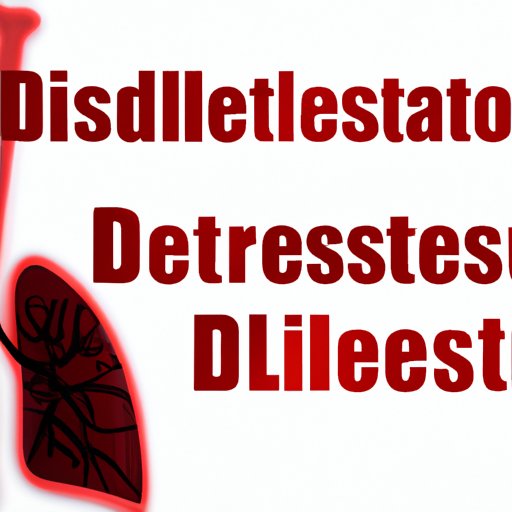
A Comprehensive Guide to Understanding Restrictive Lung Disease
Restrictive lung disease is a group of conditions that affect the lungs, making it difficult for them to expand and take in air.
The condition affects the lung’s ability to inhale and exhale air, which can result in shortness of breath and a decrease in oxygen levels in the bloodstream. Individuals with this condition may experience a variety of symptoms, ranging from mild to severe. While the symptoms of restrictive lung disease can be managed, there is currently no cure for the condition.
This article serves as a comprehensive guide to understanding restrictive lung disease, providing information on diagnosis, treatment options, and living with the condition. It will also explore the effects of COVID-19 on individuals with pre-existing conditions and the preventable measures to reduce the risk of developing the condition.
Define Restrictive Lung Disease and its Causes
Restrictive lung disease is a condition that affects the ability of the lungs to expand and contract, making it difficult to inhale and exhale air. The condition can be caused by a variety of factors, including environmental and lifestyle factors, as well as genetic predispositions.
The most common causes of restrictive lung disease include scar tissue or fibrosis in the lungs, chest wall deformities, and neuromuscular conditions. Environmental factors such as long-term exposure to dust, pollutants, and tobacco smoke can also contribute to the development of the condition.
Diagnosing Restrictive Lung Disease
The diagnosis of restrictive lung disease can be challenging as the symptoms of the condition can be similar to other respiratory conditions. A physical examination, medical history review, and diagnostic tests are required to diagnose the condition accurately.
The most common diagnostic tests used to diagnose restrictive lung disease include pulmonary function testing, chest X-rays, and CT scans. Pulmonary function testing is a comprehensive respiratory test that measures the amount of air that can be inhaled and exhaled by the lungs. Chest X-rays and CT scans can provide detailed images of the lungs and chest, allowing physicians to visualize any abnormalities or scar tissue in the lungs or chest wall.
Treatment Options for Restrictive Lung Disease
While there is no cure for restrictive lung disease, several treatment options are available to manage the symptoms and improve lung function.
The most common treatment options used to manage restrictive lung disease include medications such as bronchodilators and corticosteroids, oxygen therapy, and pulmonary rehabilitation. Oxygen therapy is used to boost oxygen levels in the bloodstream, and pulmonary rehabilitation combines exercise, breathing techniques, and education to improve lung function and manage symptoms associated with restrictive lung disease.
Living with Restrictive Lung Disease
Living with restrictive lung disease can be challenging, but with the right management strategies, patients can maintain a good quality of life.
Patients are encouraged to work closely with their physicians to develop management strategies tailored to their needs. Coping mechanisms such as breathing exercises, relaxation techniques, and lifestyle changes such as quitting smoking and reducing exposure to pollutants can help manage restrictive lung disease symptoms effectively.
Restrictive lung disease can also have emotional and psychological impacts on individuals living with the condition. Counseling, support groups, and other mental health services can help individuals cope with the emotional impact of the condition.
The Effects of COVID-19 on Those with Pre-existing Restrictive Lung Disease
Individuals with pre-existing restrictive lung disease may be at an increased risk of severe illness from COVID-19.
The COVID-19 pandemic has highlighted the vulnerability of individuals with respiratory conditions and the need to protect them from exposure to the virus. Social distancing measures, hand washing, and wearing masks can reduce the risk of contracting COVID-19.
Is Restrictive Lung Disease a Preventable Condition?
While some risk factors for restrictive lung disease such as age and genetics cannot be modified, several lifestyle factors can contribute to the development of the condition.
Reducing exposure to environmental pollutants such as tobacco smoke, dust, and chemical pollutants can reduce the risk of developing restrictive lung disease. Maintaining a healthy lifestyle that includes regular exercise, a healthy diet, and avoidance of smoking are essential habits that promote respiratory health.
An In-Depth Look at the Various Types of Restrictive Lung Disease
There are several types of restrictive lung disease, each with unique characteristics and symptoms.
Some of the most common types of restrictive lung disease include idiopathic pulmonary fibrosis, sarcoidosis, and interstitial lung disease. Patients with these conditions may require more specific treatment options tailored to their specific condition.
Conclusion
Restrictive lung disease is a complex condition that can significantly impact respiratory health. While there is no cure for the condition, several treatment options are available to manage symptoms and improve lung function.
Individuals living with the condition must work closely with their physicians to develop a personalized management plan tailored to their needs. Patients are encouraged to adopt healthy lifestyle habits, such as quitting smoking and reducing exposure to environmental pollutants, to reduce the risk of developing the condition.




